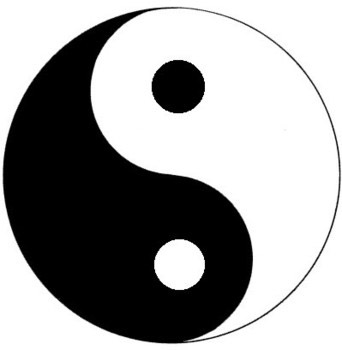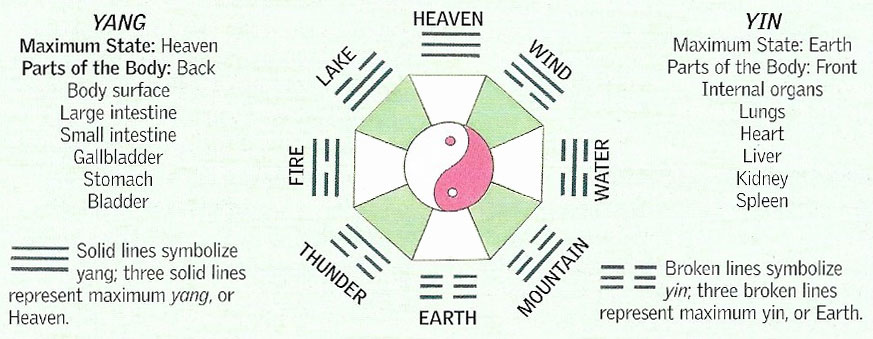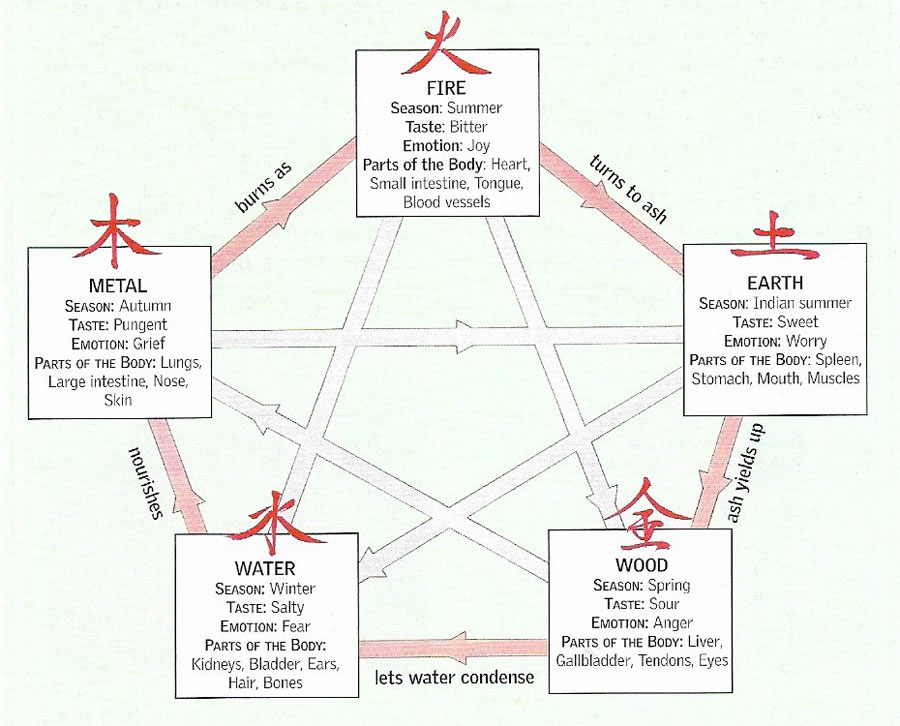yin and yang

Figure 1. Yin-yang symbol.

Figure 2. Yin and yang.

Figure 3. Chinese five elements.
Yin and yang are fundamental concepts in Chinese philosophy and medicine. Yang embodies positive, active, "male" qualities and thus compliments yin, which embodies negative, passive, "female" qualities. The concepts of yin and yang are also central to the theoretical basis of traditional Chinese medicine and macrobiotics.
In Taoism, the body and the universe as a whole can be understood in terms of these two distinct but complementary principles. The one can't exist without the other, so that nothing is ever completely yin or yang, but a combination of the two.
Theory of Chinese medicine
Whereas Western doctors start with a symptom, then look for a specific cause, traditional Chinese medicine regards the symptom as a "pattern of disharmony". Yin/yang and the five elements theory are used both to classify the pattern and to determine an effective herbal cure.
Yang organs (listed on the left in Figure 2) are thought to channel energy; acute pain, spasms, and headaches indicate excess yang. Yin organs (listed on the right in Figure 2) "hold" energy; dull aches and pains, chilliness, and fatigue aresigns of excess yin. Most people show a mixture of yin/yang symptoms. The skill of the practitioner lies in discerning the pattern and prescribing the correct remedy. Yin and yang are traditionally represented as broken and solid lines in symbols known as trigrams (Figure 2).
The five elements
Each element has a yin organ and a yang organ, plus specific tastes, emotions, and seasons of the year. Quaities belonging to the same element are said to support one another. So, to treat a liver order, a yin organ with the element wood, a Chinese doctor might use sour-tasting herbs, since sour is associated with wood.


